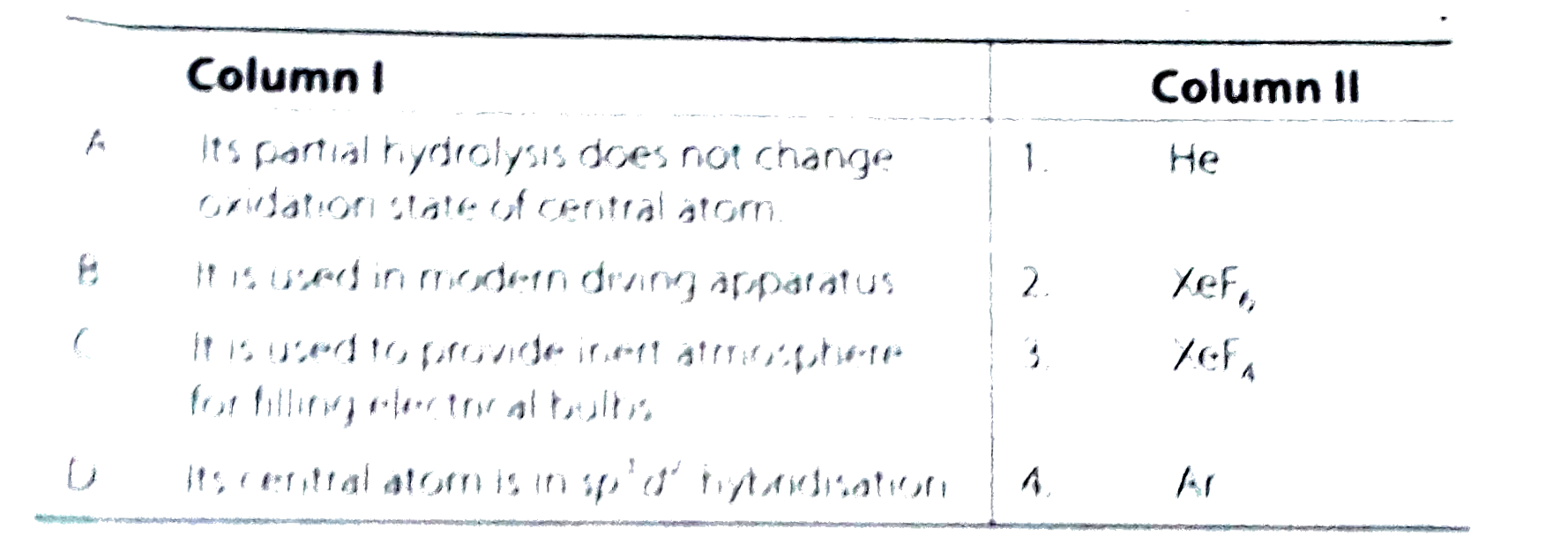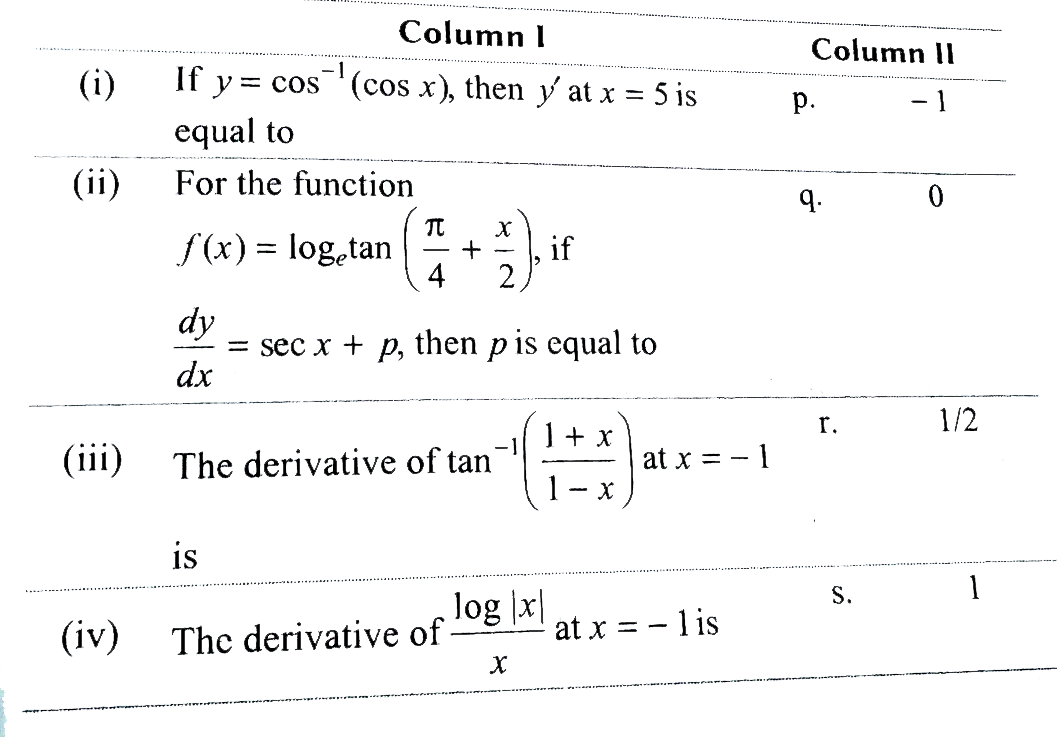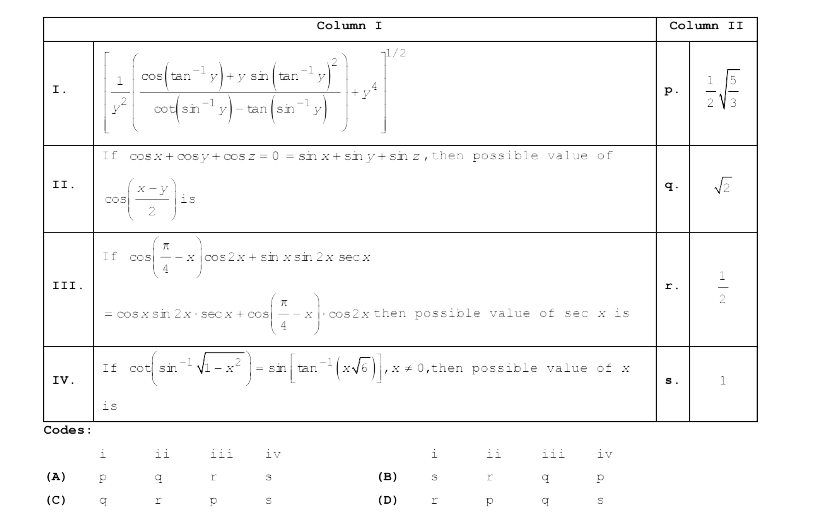Match the following and mark the correct options AnimalRepiratory organEarthworm(i).Moist cuticleAquatic Arthropods(ii).GillsFishes(iii).LungsBirds/Reptiles(iv).Trachea
2 1 4 3
1 4 2 3
1 3 2 4
1 2 4 3
The correct Answer is:b
To solve the matching question, we need to identify the correct respiratory organ for each animal listed. Here’s a step-by-step breakdown of the solution:
Step 1: Identify the respiratory organ for Earthworm
- Earthworms respire through their moist cuticle.
- Therefore, we match Earthworm with (i) Moist cuticle.
Step 2: Identify the respiratory organ for Aquatic Arthropods
- Aquatic arthropods, such as crabs and shrimp, respire through gills.
- Thus, we match Aquatic Arthropods with (ii) Gills.
Step 3: Identify the respiratory organ for Fishes
- Fishes also respire through gills.
- Therefore, we match Fishes with (ii) Gills as well.
Step 4: Identify the respiratory organ for Birds and Reptiles
- Birds and reptiles respire using lungs.
- Hence, we match Birds/Reptiles with (iii) Lungs.
Step 5: Identify the respiratory organ for Arthropods
- Aquatic arthropods respire through gills, not trachea.
- Terrestrial arthropods, like insects, use trachea for respiration.
Final Matching
Now, let's summarize the matches:
- Earthworm → (i) Moist cuticle
- Aquatic Arthropods → (ii) Gills
- Fishes → (ii) Gills
- Birds/Reptiles → (iii) Lungs
Correct Options
The correct options based on the matches are:
1. Earthworm - (i) Moist cuticle
2. Aquatic Arthropods - (ii) Gills
3. Fishes - (ii) Gills
4. Birds/Reptiles - (iii) Lungs
Conclusion
The correct coding for the matches is given under option 2.
---
- Earthworms respire through their moist cuticle.
- Therefore, we match Earthworm with (i) Moist cuticle.
- Aquatic arthropods, such as crabs and shrimp, respire through gills.
- Thus, we match Aquatic Arthropods with (ii) Gills.
- Fishes also respire through gills.
- Therefore, we match Fishes with (ii) Gills as well.
- Birds and reptiles respire using lungs.
- Hence, we match Birds/Reptiles with (iii) Lungs.
- Aquatic arthropods respire through gills, not trachea.
- Terrestrial arthropods, like insects, use trachea for respiration.
Now, let's summarize the matches:
- Earthworm → (i) Moist cuticle
- Aquatic Arthropods → (ii) Gills
- Fishes → (ii) Gills
- Birds/Reptiles → (iii) Lungs
The correct options based on the matches are:
1. Earthworm - (i) Moist cuticle
2. Aquatic Arthropods - (ii) Gills
3. Fishes - (ii) Gills
4. Birds/Reptiles - (iii) Lungs
The correct coding for the matches is given under option 2.
Topper's Solved these Questions
- BOOK - NCERT EXEMPLAR ENGLISHCHAPTER - BREATHING AND EXCHANGE OF GASESEXERCISE - VSATQ10videos
BREATHING AND EXCHANGE OF GASES
- BOOK - NCERT EXEMPLAR ENGLISHCHAPTER - BREATHING AND EXCHANGE OF GASESEXERCISE - SATQ7videos
BREATHING AND EXCHANGE OF GASES
- BOOK - NCERT EXEMPLAR ENGLISHCHAPTER - Body Fluids and Circulation EXERCISE - LONG ANSWER TYPE Q5videos
Body Fluids and Circulation
- BOOK - NCERT EXEMPLAR ENGLISHCHAPTER - CELL : THE UNIT OF LIFE EXERCISE - Long Answer Type Questions1videos
CELL : THE UNIT OF LIFE
Similar Questions
Match the column I,II,and III .Select the correct option :
 View Solution
View SolutionMatch the items of Columns I and II and mark the correct option.
 View Solution
View SolutionMatch the items of Columns I and II and mark the correct option.
 View Solution
View SolutionMatch the columns I,II and III and find correct options
 View Solution
View SolutionMatch the columns I, II and III. Choose the correct option.
 View Solution
View SolutionMatch the Column I with Column II and mark the correct option from the given below.
 View Solution
View SolutionMatch the Column I with Column II and mark the correct option from the given below.
 View Solution
View SolutionMatch the Column I with Column II and mark the correct option from the given codes.
 View Solution
View SolutionMatch the following and mark the correct option
Column I Column IIFast muscle fibresi.MyoglobinSlow muscle fibresii.Lactic acidActin filamentiii.Contractile unitSarcomereiv.I-bandView SolutionMatch the following and mark the correct option
Column I Column IIFast muscle fibresi.MyoglobinSlow muscle fibresii.Lactic acidActin filamentiii.Contractile unitSarcomereiv.I-bandView Solution

